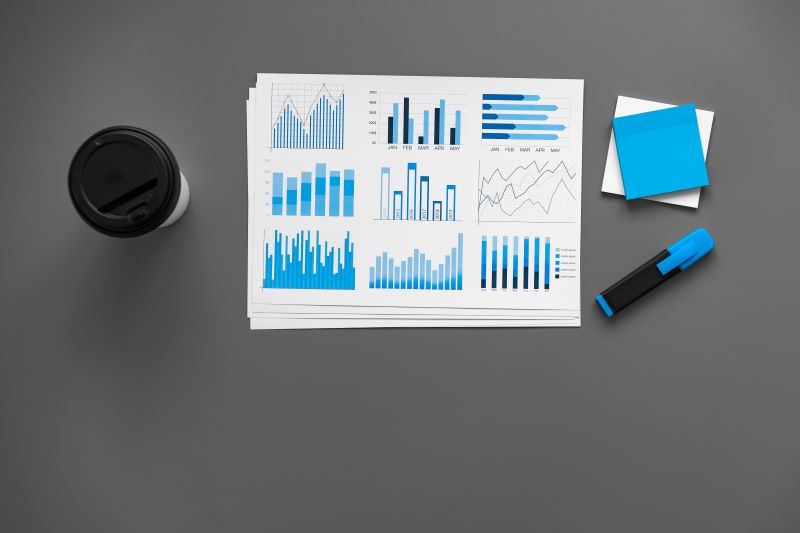One part of your website that perhaps does not get as much attention as it deserves at first glance is the website’s address itself. Typically, a URL is overlooked as the simple means of getting to a website, but it is actually a very complex part of website development and design.
This article will discuss not just the meaning of a URL, but will also cover all of the different components that will be useful to know as a commercial website manager. You may be wondering, “How will other people find my URL”, “What is a parameter”, or “What does TLD stand for?” All of these questions and more will be answered in this article.
What Is A URL?
The first question to answer is, “What is a URL?”
If you have ever used the internet, you have likely encountered a URL before. Whenever you go to a website, the URL is the website’s address that you will find typed out at the top of your web browser. It allows web users to navigate a website and access its information. But it can retrieve a lot of different data beyond just the home page of a website. Here are a few other ways you can find an example of uses:
- Blogs
- E-commerce shops
- Images
- Downloadable files
- Social Media profiles
Components of a URL
It is important to understand the smaller components that create a URL in the first place. There are several elements that go into building, especially one that is SEO-optimized and easy to read for Google and other sources.
There are five basic parts to every URL, although some formats can have up to ten different components. We will discuss the primary five in greater detail, and then touch on the additional five elements later.
Scheme
The scheme, also known as the protocol, is the component that informs web servers of which protocol they should use when accessing a page on your website. HTTPS, which stands for Hypertext Transfer Protocol Secure, is the most common type of scheme that you will find on the internet. It tells your web server to encrypt your information so that cybercriminals cannot access any of it.
Subdomain
The subdomain indicates which specific page on your website you would like to view. This might be the blog, contact page, or any other page on your website that is accessible to your users. It is also a great way for your search engine to indicate that there is more to your website than just one page, which allows your users to explore more.
Second-Level Domain
Your second domain level, or SDL, is the name of your website. This is fairly straightforward; the SDL simply serves as a way for web users to know what brand or site they are visiting.
TLD
TLD stands for Top-Level Domain. The top-level domain tells you what kind of business or entity you register as online. One of the most common types of TLD is .com, which registers for commercial entities and businesses. We will go further in-depth on TLD meaning and importance later on.
Subdirectory
A subdirectory is also known as a subfolder. It helps users and web crawlers alike to understand what section of a web page they are on. These pages are like the smaller folders inside of the subdomain, which serves as a sort of filing cabinet. For a specific type of information, you choose a subdomain. For more specifics within that genre, you can choose a subdirectory.
Example of URL Formatting and Additional Components
Here is a general example of how a URL is formatted, and a breakdown of the five main components:
https://seodesignchicago.com/blog
Scheme: https://
Subdomain: www.
Second-level domain: seodesignchicago
TLD: .com
Subdirectory: /blog
This is generally how most URLs will be formatted. Subdomain sometimes does not even appear in your URL bar after you have searched a website. Instead, the website might just appear as:
https://seodesignchicago.com/blog
This is because “www.” acts as a sort of default setting, typically taking you to the primary domain page.
Additional URL Components
When you look at a general example of components and formatting, it will only include the primary five components. However, there are a few more that you might encounter on your own website or others:
- Port – This is a number used to direct data to a specific point or service. The number will be different depending on your server.
- Path – The path is the location of a specific file or page that your user wants to access.
- Query – If you have ever seen a question mark pop up in a website, you have found a query! This means a query string is being performed, which specifies the parameters of your inquiry.
- Parameters – Parameters are the values being queried in a search. They can be a number, encrypted value, or other data. Some parameters are used to track your marketing efforts.
- Fragments – These are optional components that are usually placed at the end with a hash symbol (#). Fragments specify a part of a webpage, like a header or footer or other location.
TLD Meaning and Domain Importance
Let’s do a little bit more investigation into the URL meaning of TLD, and why it matters for your website. As previously mentioned, TLD stands for Top-Level Domain. It is the last segment of your website’s domain name, typically prefaced by a period (.). The TLD is a part of a slightly larger element of your URL known as the domain. The domain is the primary web address that you are trying to reach. It combines the second-level domain, subdomain, and top-level domain.
Your domain acts as a type of branding for your company. If you are wondering, “How will customers find my website?”, the domain is a great place to start. Make sure your domain is easy to spell and remember. You might try to incorporate keywords into your domain if they feel appropriate. You can additionally use domain generators to help you find the perfect match if you are struggling to come up with one on your own.
The primary purpose of TLDs is to tell your website’s visitors exactly what type of website they are visiting. There are a lot of different forms of TLDs, but the most common TLDs are known as Generic Top-Level Domains (gTLDs).
GTLDs that you may use:
- .com – commercial and business-related
- .net – networks and the general public
- .org – organizations such as nonprofits
- .edu – educational, typically used by universities and colleges
- .gov – government organizations
- .int – international organizations
How to Find My URL for Google Business
If you use Google Business, you likely know that it is a great tool to help your business get reviews and attract new customers. But when you are partnered with Google Business, you may be struggling to find your associated Google Business URL.
Just head to the Google My Business sign-in and copy your profile link to share. This profile link will take you directly to your Google Business URL. From there, you can send the link to anyone you would like; customers and clients, employees, partners, and more. This is an easy way for others to access your website and leave reviews for your products and services.
Additional URL Uses
Your URL meaning does not only lie in your domain. It can also be used for other purposes, like tracking your marketing campaigns. This is where one of the less common components of a URL comes into play. Specifically, using parameters can help you learn a lot about your marketing campaign’s success. By using UTMs, or Urchin Tracking Modules, you can build signals into your URL that count how many people make it to your website by using your marketing techniques like sponsored posts, social media, and more.
Using parameters as a part of your URL building can occasionally mean trouble for your SEO. However, if you work with the right team of SEO professionals, you can make your parameters and your SEO work hand in hand.
Building The Perfect URL
After finding the URL and TLD meaning, it is important to be able to build your perfect URL and website. Luckily, at SEO Design Chicago, we are here to help! Our team of SEO and online marketing professionals is here to help you perfect your website in every sense. From writing content for your site’s blog to navigating the detailed work of parameters and your TLD, you don’t have to worry about doing anything on your own if you don’t want to. With years of experience in SEO and online marketing, we have the tools to make your website exactly what you want it to be.
Contact our team at SEO Design Chicago today for the perfect URL and the perfect website.







Contact Us today!